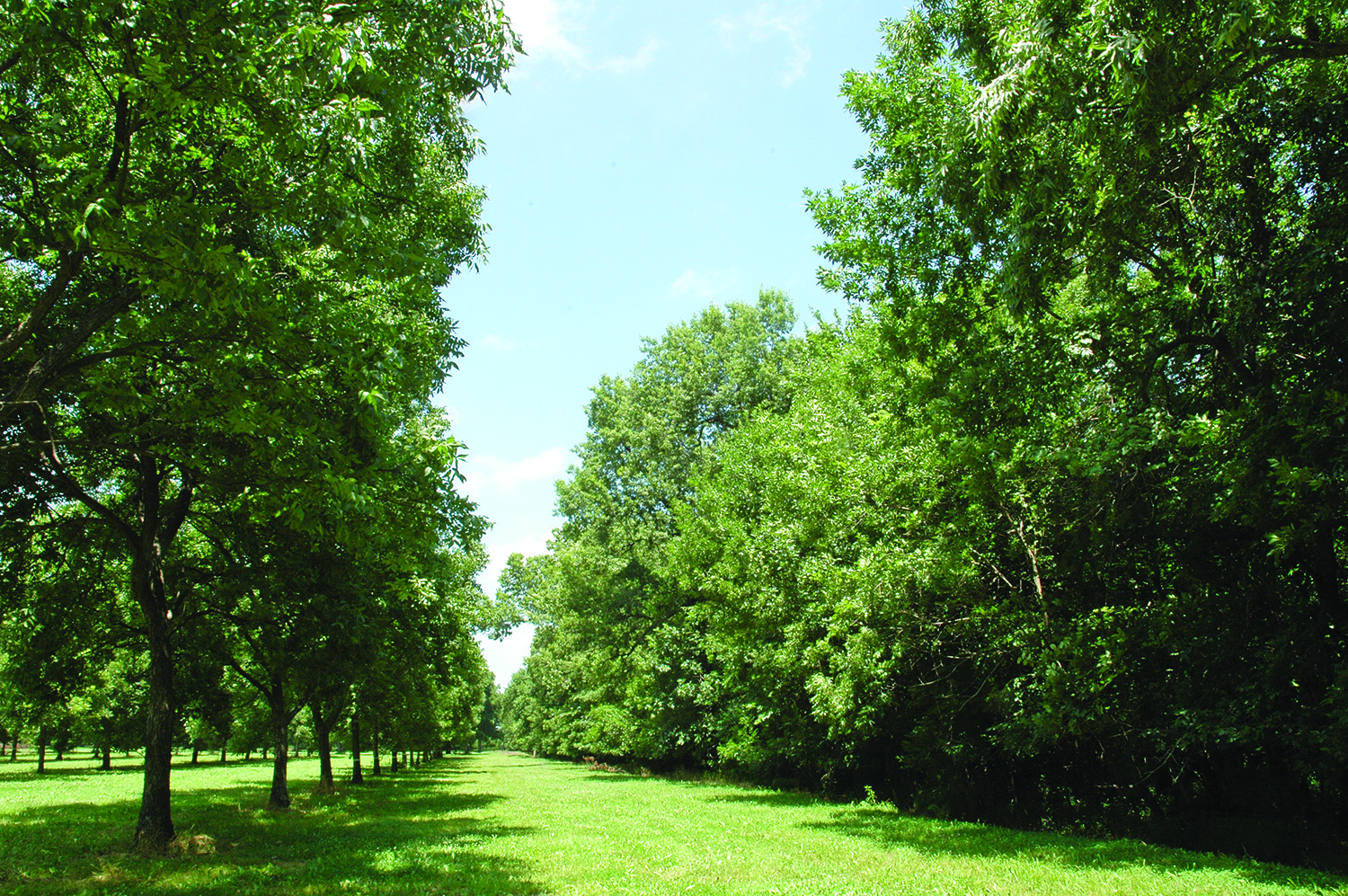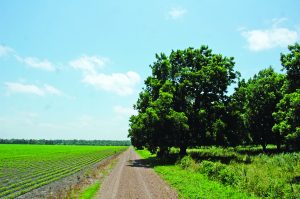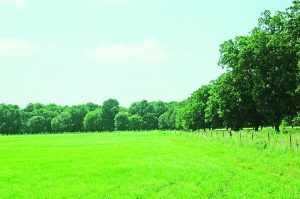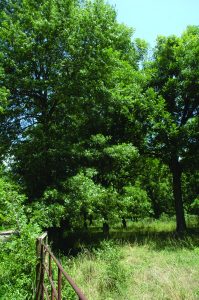Be Aware of Edge Effects
A neighbor's row crop, the hayfield on the side, or even trails of brush can create edge effects like increased wildlife or pests in your native pecan grove.

Pecan groves bordered by woodlands suffer from increased wildlife damage. (Photo by William Reid)
In ecological terms, an edge effect occurs along the border between two distinct vegetation types. One of the most common edge effects occurs between forests and fields. Edge effects are important to ecologists because plant and animal diversity explodes in these areas. This diversity quickly translates into a prime feeding ground for both insects and wildlife. To farmers like my neighbor, the edge effect usually means a reduced crop along the edge of the field.
Multiple types of edge effects impact nut production in every native pecan grove. One of the most often recognized edge effects occurs when a pecan grove is bordered by a stand of bottomland hardwood trees—as seen in the photo at the top of the page. The hardwood forest serves as cover for all the animals that like to feed on pecans. Squirrels will run from their nesting sites in the timber to their preferred pecan trees in a native grove so many times that they create well-worn trails in the ground cover.
But squirrels are not the only animals that emerge from the forest to feast on pecans. Deer, flying squirrels, mice, raccoons, multiple species of woodpeckers, and blue jays all come out of the timber and into the grove. Have you ever pulled an acorn off the pecan cleaning table and wondered where it came from? That acorn was probably flown into your orchard by a woodpecker from the neighboring wooded area. Woodpeckers don’t fly into the orchard to steal pecans; they are simply trading an acorn for one of your native pecans.
In dealing with wildlife predation of our pecan crop, I focus all our squirrel trapping efforts on the border area between pecan grove and timberland. We start trapping in early summer and continue through harvest. I also spend some time shooting into every squirrel nest I see in the adjacent timber area. It’s amazing how many squirrels can be caught napping at home. Despite our best efforts, we still lose far more pecans to squirrels in a 200-foot-wide swath adjacent to the neighbor’s timberland than any other location on the farm.

Soybeans planted bordering pecans can increase stinkbug problems in the orchard. (Photo by William Reid)
Other common edge effects occur when cropland or hayfields border pecan groves. Soybeans are often planted in fields adjacent to pecan orchards. The soybean edge effect is not as readily apparent as the woodland effect, but soybeans harbor stink bugs that can severely impact the yield and grade of a native pecan crop. Several species of stink bugs actively feed on the stems and pods of the soybean plant. These insects can build to such high population numbers that they will eventually start to migrate out of the soybeans and search for new food sources. Native pecans seem to be the perfect food for migrating stink bugs.
Stink bug feeding can start as early as the water stage, turning the entire inside of the nut black, stopping further kernel development, and leaving a blackened, wafer-thin, seed coat inside the shell. Once kernel tissues have developed, stink bug feeding creates the bitter black spots on the kernels that drive both growers and shellers crazy. The stink bug edge effect often goes unnoticed as nuts from the entire orchard get mixed during harvest operations. However, that doesn’t mean the soybean edge effect should be ignored. Well-timed insecticide treatments applied to trees along the edge of the grove could work to slow the movement of stink bugs from soybeans into the pecan grove.

Insects feeding in adjacent hay fields migrate to pecan trees on the day the hay is cut. (Photo by William Reid)
Hay crops next to pecan groves provide another example of the edge effect. As a general rule, actively growing hay crops have little or no impact on an adjacent pecan grove. That changes on the day the hay is cut and baled. As everyone who has ever cut hay has noticed, the mower seems to get covered with insects of all kinds. Mowing a hayfield forces the out-migration of all types of insects—from beneficial ladybugs and lacewings to harmful, kernel-feeding, stink bugs and leaf-footed bugs. Hay harvest in early summer will have little impact on an adjacent pecan crop. However, cutting a hay crop in August can force the movement of stink bugs into the trees just at the perfect time to cause maximum kernel damage.

Don’t allow trees and brush to grow up in fence rows creating additional habitat for wildlife. (Photo by William Reid)
Most edge effects occur along the border of your pecan grove and a neighbor’s property. As a consequence, there is often little you can do to change the nature of the interaction between your pecan grove and the vegetation across the fence. However, there is one type of edge effect that native pecan growers can control.
In many native groves, I find thin strips of woody vegetation snaking through the orchard following the course of a drainage ditch or intermittent stream. Less frequently, some landowners have allowed trees and brush to grow up in their fence lines, creating another border area between pecan crop and wild vegetation.
These thin strips of vegetation create an edge effect that serves only to increase problems with wildlife. The trees and brush provide cover for birds and squirrels that will move out into the grove to feed on our pecan crop. These strips of dense vegetation also turn into deer trails providing daytime cover for the animals that will feast on pecans all night long. Removing woody vegetation along waterways and fence lines will slow the movement of wildlife into your grove and ultimately reduce damage to your crop.

